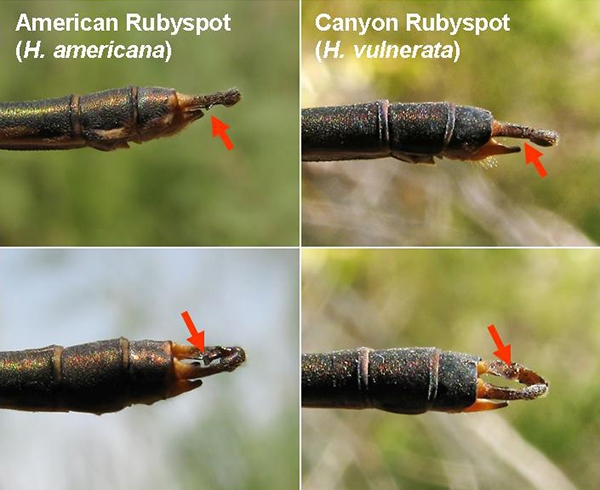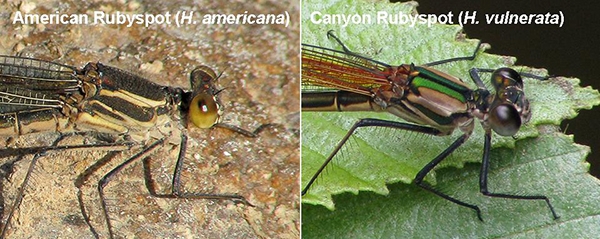Two rubyspot species (Hetaerina sp.) are commonly found in appropriate habitats in Arizona: the American Rubyspot and the Canyon Rubyspot. The two species can be found at the same time and at a same location, but in Arizona only the American Rubyspot is normally present at low elevation sites. To separate mature MALESof the two species in the field, focus on the wing pattern, the abdomen color, and in the hand, the shape of appendages:
To separate mature FEMALES of the two species, focus on the wing pattern (as in males) and thorax color (see composite picture below):




